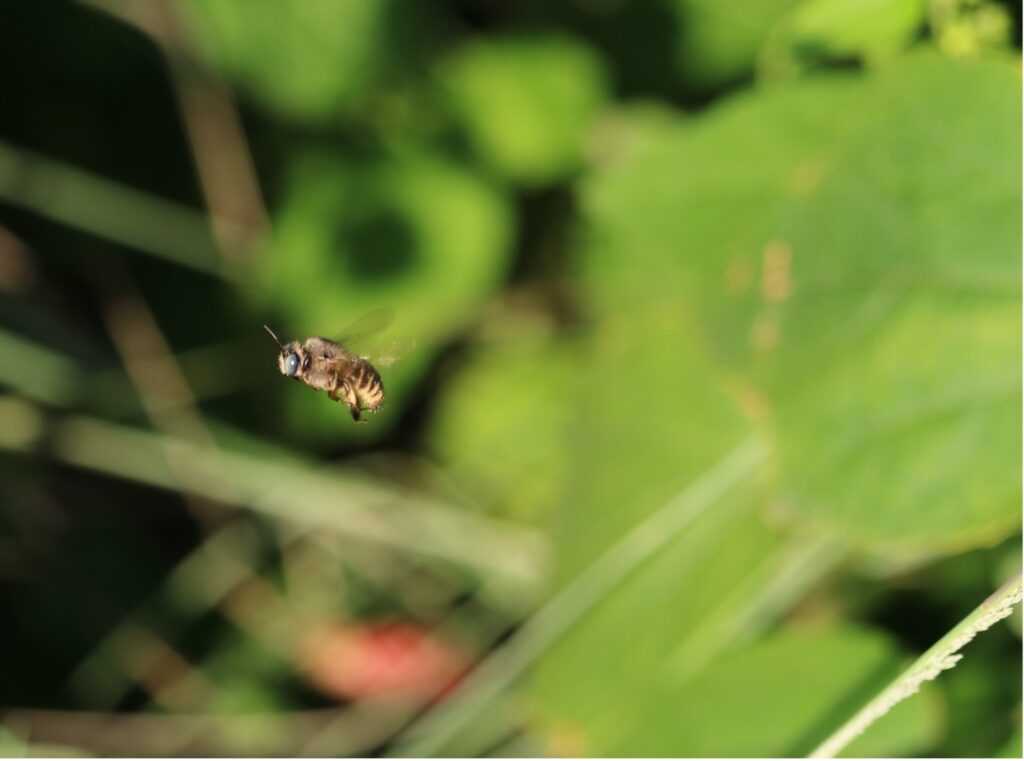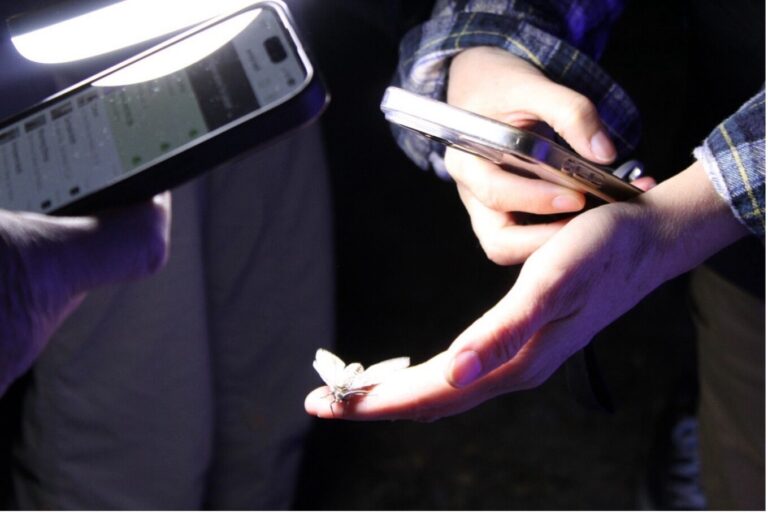Última actualización el 30 de enero de 2024
Una abeja carpintera de Parkinson (Xylocopa tabaniformis ssp. Parkinsoniae) en pleno vuelo. Crédito de la foto: Lee Marlowe
¡En nuestro RIVER CAMP trimestral! Series, invitamos a los seguidores más jóvenes del río San Antonio (y a los jóvenes de corazón) a aprender más sobre este precioso recurso de agua dulce. ¡Sintonícese para obtener información educativa, actividades centradas en los ríos, excelentes videos e incluso formas en que las familias pueden tomar medidas personales para un río sustentable!
¿Todas las abejas producen miel?
Cuando escuchas la palabra “abeja”, ¿qué es lo que te viene a la mente? ¿Quizás te imaginas una colmena gigante con miel en su interior? ¿O imaginas a una abeja viviendo sola en su propia casa diminuta?
Aunque te sorprenda, esto último es mucho más cierto: Texas es el hogar de varios cientos de especies de abejas, la mayoría de las cuales son abejas solitarias. A diferencia de la abeja melífera, las abejas solitarias no recolectan néctar para producir miel. Sin embargo, como todas las abejas, brindan el servicio ecosistémico esencial de la polinización. ¿Sabías que uno de cada tres bocados de comida que ingieres lo proporciona un polinizador? La próxima vez que te sientes a comer, ¡dale las gracias a una abeja por la comida de tu plato!
Algunos tipos de abejas solitarias, como abejas cortadoras de hojas (Género Megachile) y abejas carpinteras (Género Xilocopa), son nativas de Texas. Se las puede encontrar solas, refugiándose en su hogar o volando de flor en flor (lo adivinaste, ¡polinizando!).
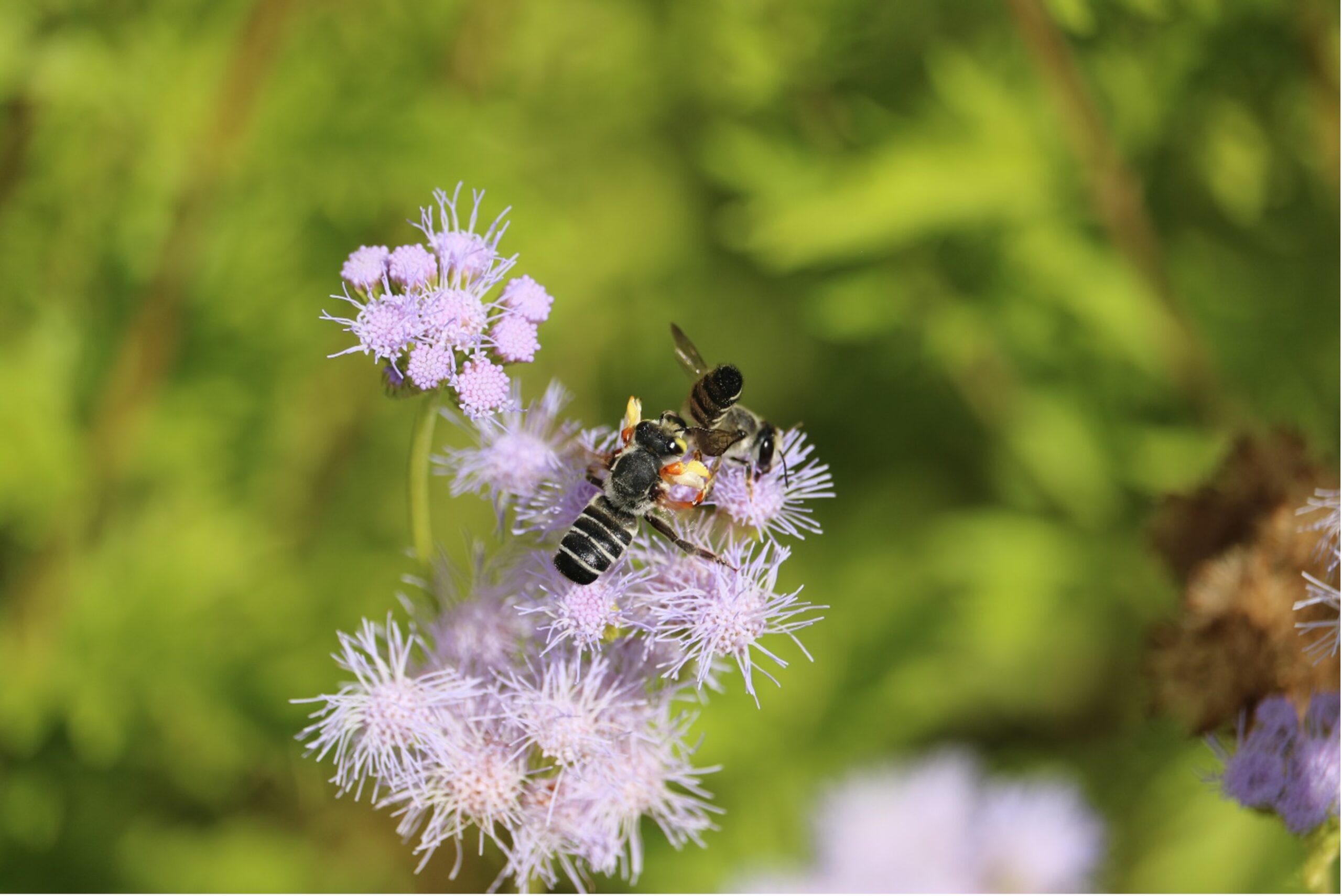
Un par de Megachile policaris, Una especie de abeja cortadora de hojas que se alimenta de la flor de la niebla de Gregg. Crédito de la foto: Lee Marlowe
Lamentablemente, nuestras abejas nativas están en problemas. Las actividades humanas, como la construcción de complejos de viviendas y los céspedes tradicionales, están destruyendo los hábitats y reduciendo el espacio en el que las abejas pueden encontrar refugio. El uso de pesticidas también puede ser perjudicial para las abejas. Los pesticidas son sustancias químicas diseñadas para repeler a los insectos dañinos que se alimentan de nuestras plantas. Lamentablemente, también pueden matar a los beneficiosos, como las abejas.
¡Cómo puedes ayudar a las abejas!
- Plantar vegetación nativa que proporcionará alimento a las abejas mientras polinizan. Echa un vistazo Esta guía a las mejores plantas para polinizadores en tu zona.
- Reducir los pesticidas en tu jardín o busca alternativas más seguras.
- Utilice el Buscar por iNaturalist aplicación ¡Para identificar las especies de abejas que viven cerca de usted! Dato curioso: ¡Un miembro del personal de River Authority identificó más de 13 especies de abejas que polinizan la vegetación nativa en uno de nuestros edificios!
- ¡Construye un hotel para insectos!
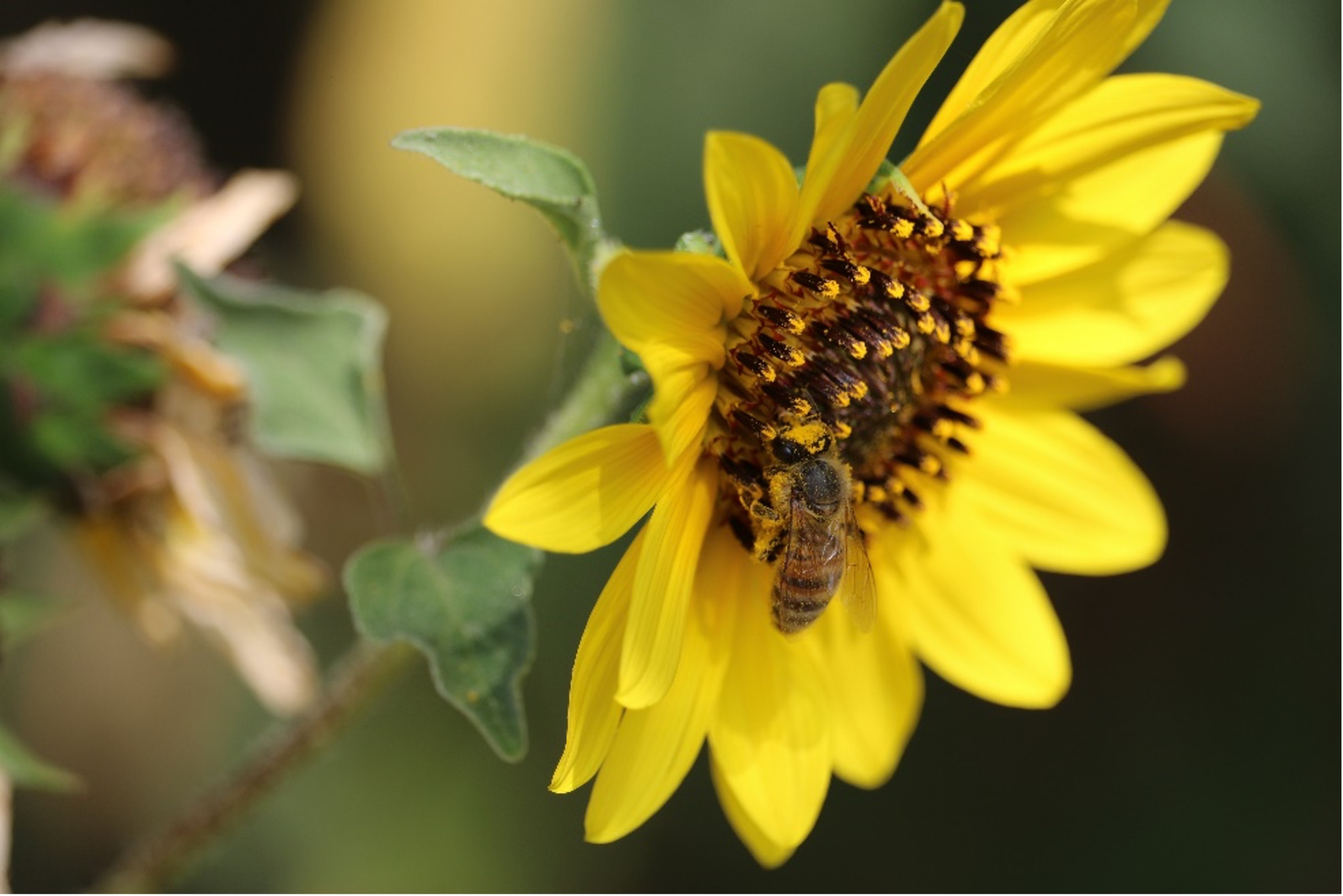
Una abeja melífera occidental (Apis mellifera) se alimenta de un girasol común. Crédito de la foto: Lee Marlowe
¿Qué es un hotel para insectos?
Si has visitado Parque de la ConfluenciaEs posible que hayas visto una escultura de aspecto interesante que se parece a ésta:
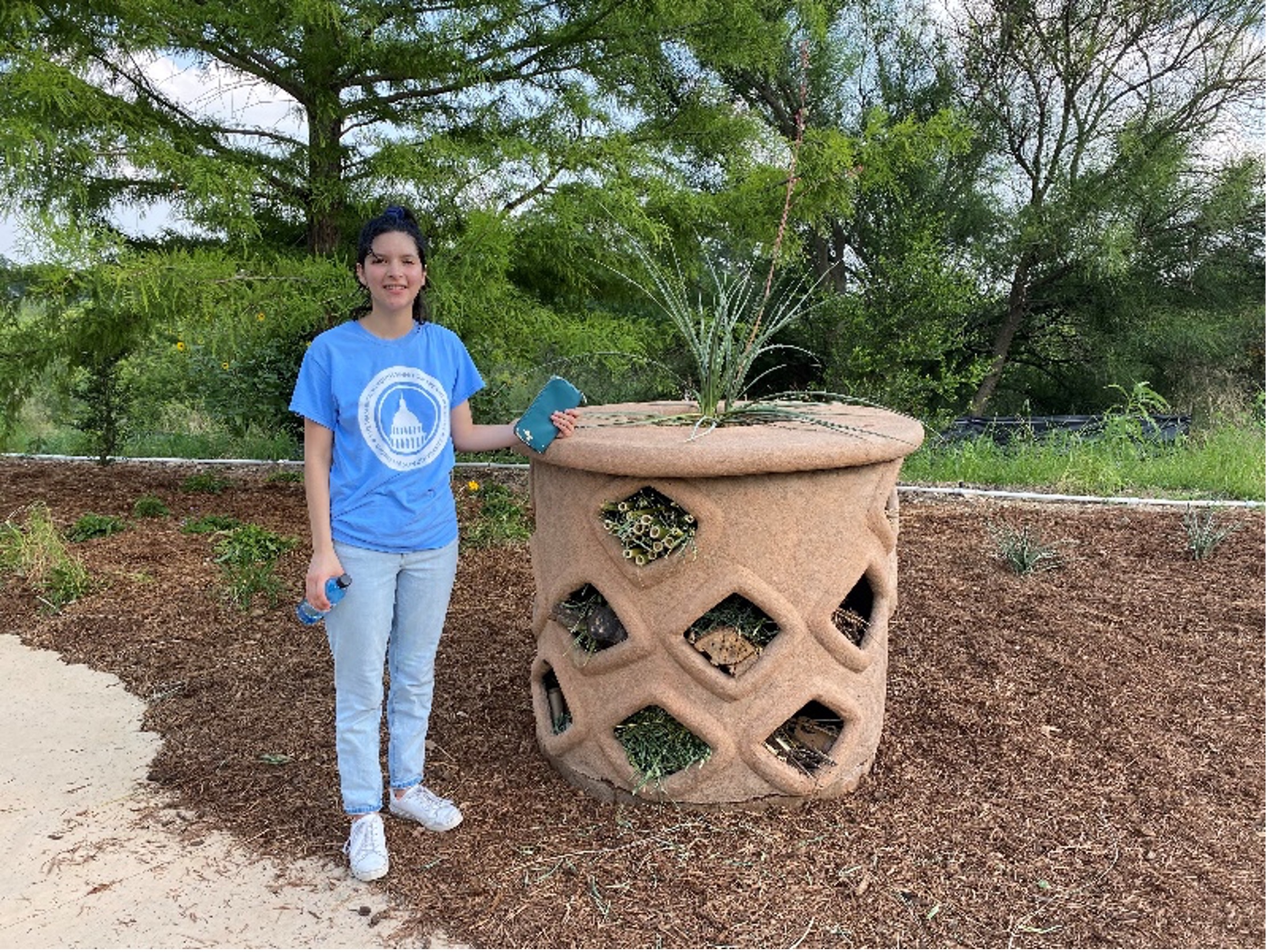
La estudiante en prácticas Paloma Jiménez con el hotel de insectos. Crédito de la foto: San Antonio River Foundation
Sin embargo, no es una escultura gigante, ¡es un hotel gigante para insectos! Este hotel es único en su tipo y fue diseñado por el artista local Tobin Simpson Hays. Ubicado junto al Jardín de la Amistad de América del Norte, este hotel único brinda refugio a los insectos mientras Realizar el importantísimo servicio ecosistémico de la polinización. ¿Te sientes inspirado? Mira esto tutorial de hotel de abejas Para empezar
¿Quieres saber más sobre las abejas?
¡Mira este interesante video a continuación para ver algunas abejas en acción a lo largo del río San Antonio mientras aprendes datos más importantes!
¡El alcance del río ha vuelto!
Alcance del río es un boletín trimestral de 12 páginas diseñado para informar a los electores de la Autoridad del Río San Antonio sobre los numerosos proyectos de la agencia, servir como vehículo de comunicación para la junta directiva y fomentar un sentido de unidad e identidad entre los residentes de Bexar, Wilson. , Karnes y Goliad.
Si desea ser incluido en la lista de correo de Alcance del río, por favor Contáctenos o completa el formulario aquí.

